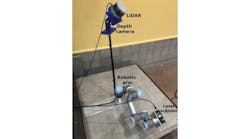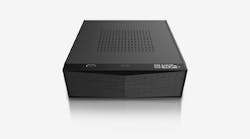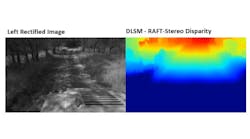DECEMBER 1--Eutecus (Berkeley, CA, and Austin, TX;www.eutecus.com) has been awarded two Phase II Small Business Technology Transfer Research (STTR) grants from agencies of the United States government, furthering its work in high-speed image processing in the infrared and near-infrared spectrum. The grants use Eutecus' cellular visual technology (CVT), based on concepts of cellular nonlinear network (CNN) architectures. Work performed under the grants will lead to advanced applications in critical areas such as security and surveillance and missile defense.
The first grant, "Multispectral Nanoantenna Infrared Sensors," from the Missile Defense Agency for $749,810, covers the development of nanotechnology operating in infrared bands and ensuing integration with an ultrahigh speed cellular visual microprocessor (CVM/CNN) operating at rates beyond 1000 frames/s. The second grant, "Focal Plane Array Processors with Adaptive Visual Range and Millimeter Wave Sensors," from the Office of Naval Research, has an initial value of $299,774. This grant covers the initial stages of the development of a high-resolution ultrahigh-speed cellular visual microprocessor (CVM/CNN) based on focal-plane processor array with adaptive optical input in the visual and/or near-infrared/short-wavelength infrared spectrum.
Both of these grants include collaboration with the University of Notre Dame of South Bend, IN, and AnaLogic Computers of Budapest, Hungary. The program builds on Notre Dame's expertise in nanoantenna research and uses AnaLogic's capability in system integration of high-speed vision technologies.
Eutecus develops and provides hardware and software capabilities for improved high-speed image flow capture and processing. The core IP of the company is programmable, real-time, bioinspired visual computing technology based on its proprietary CVT. Mimicking the operation of the human eye, CVT yields orders of magnitude improvements beyond the current state of the art in applications such as industrial process control and quality inspection, security and surveillance, and law enforcement and military.




